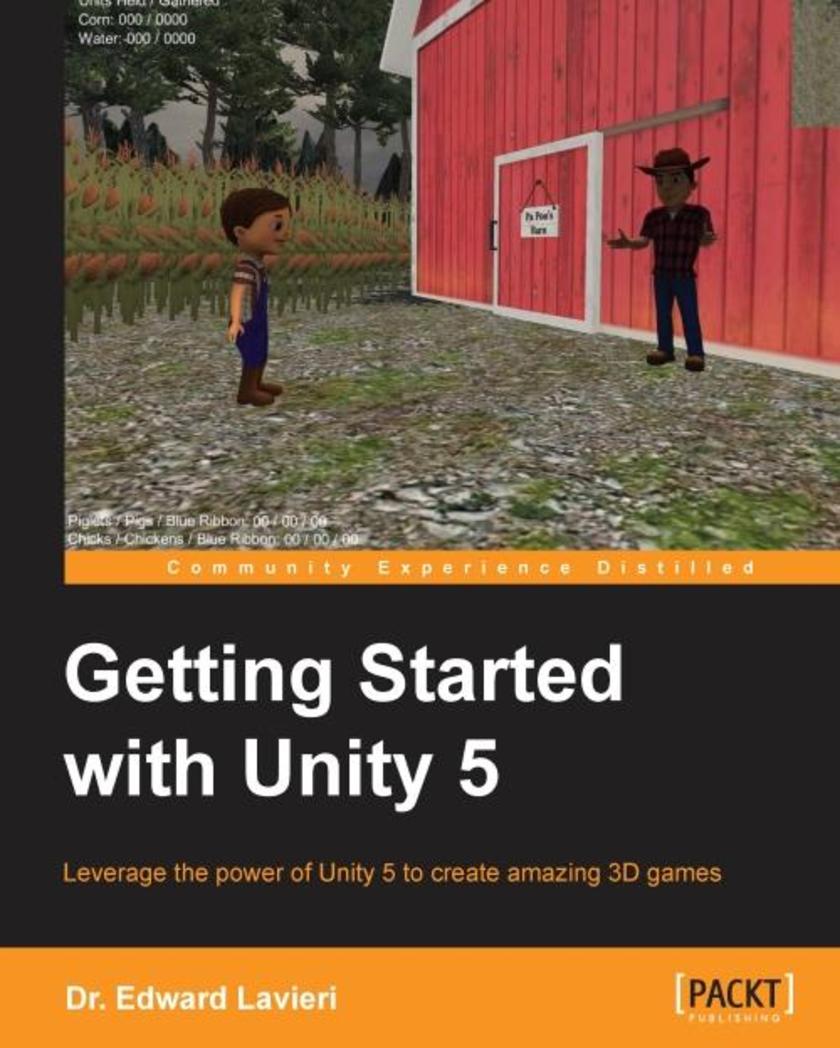
Getting Started with Unity 5
¥54.49
If you are a game developer interested in learning Unity 3D from scratch and becoming familiar with its core features, then this book is for you. No prior knowledge of Unity 3D is required.
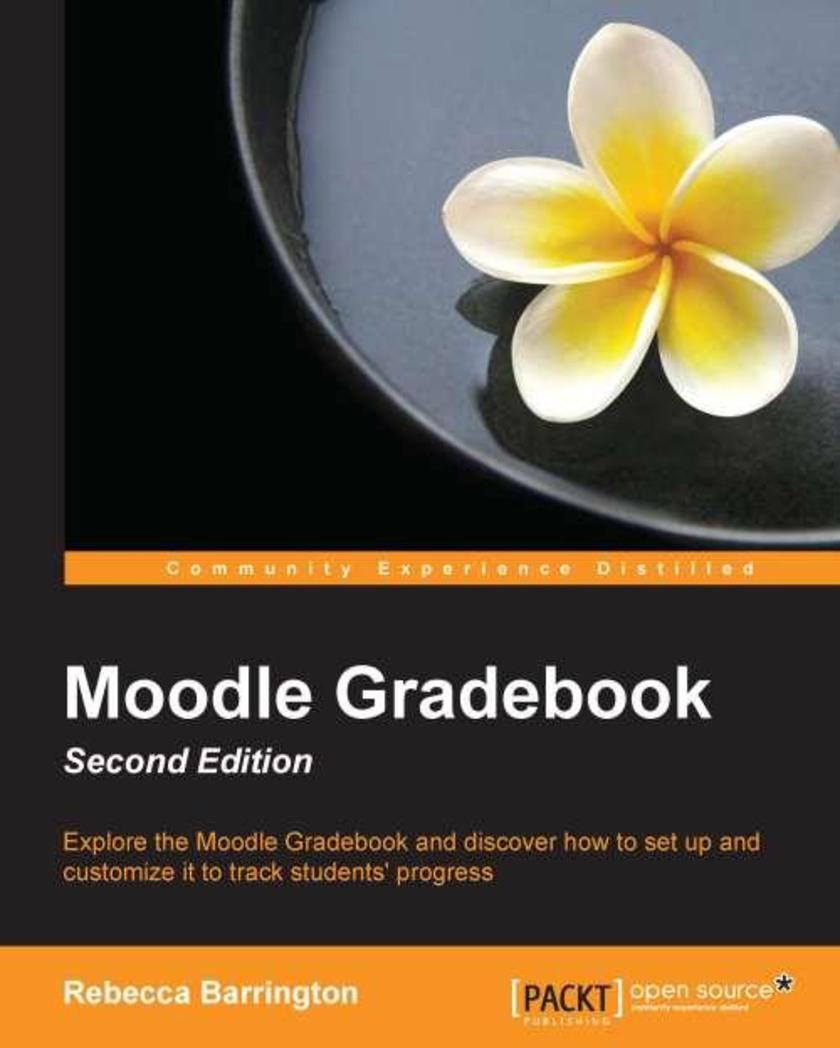
Moodle Gradebook - Second Edition
¥54.49
This book is for teachers and administrators who have experience with Moodle. Basic knowledge of Moodle 2.x will be required, but no prior knowledge of grade functions is needed. This book will help you utilize the full functionality of Version 2.7.
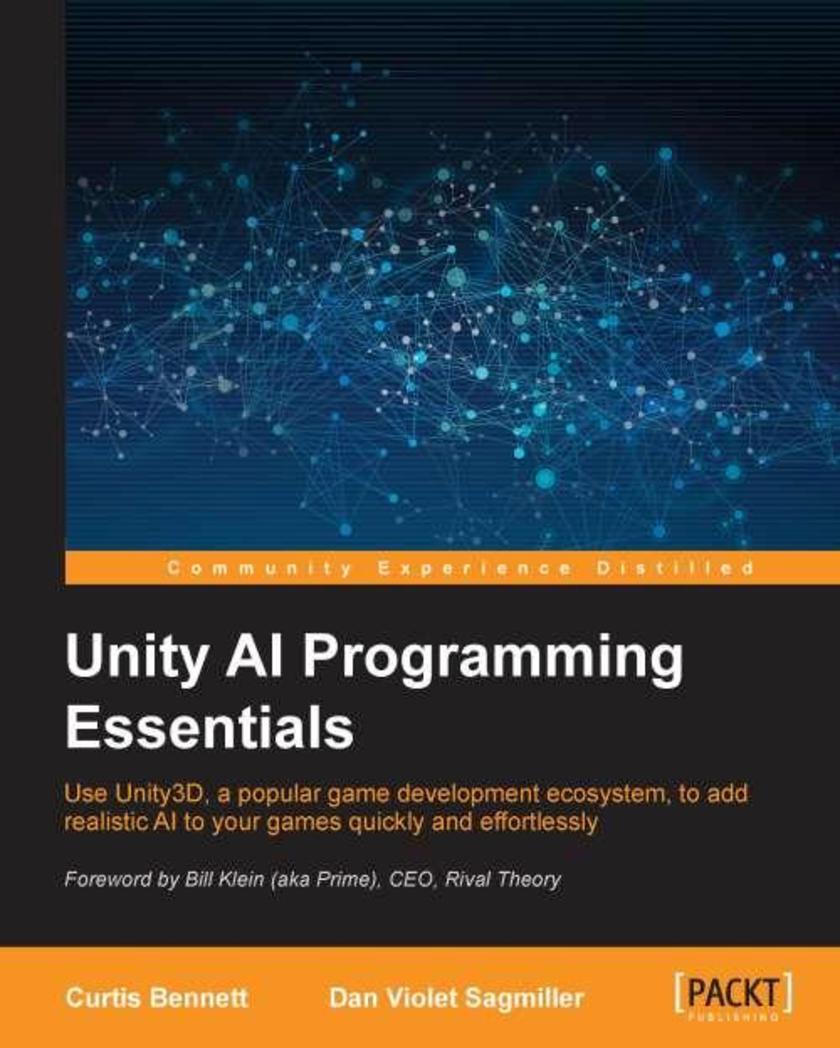
Unity AI Programming Essentials
¥54.49
This book is aimed at developers who know the basics of game development with Unity and want to learn how to add AI to their games. You do not need any previous AI knowledge; this book will explain all the essential AI concepts and show you how to add and use them in your games.
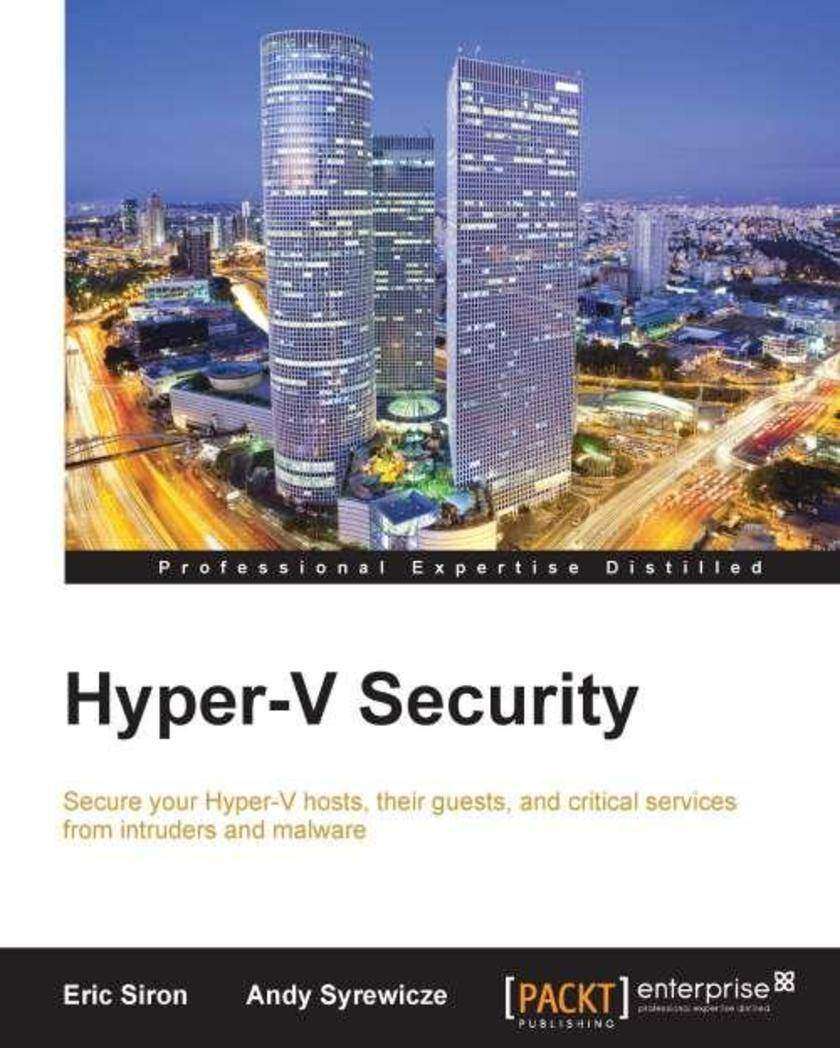
Hyper-V Security
¥54.49
Hyper-V Security is intended for administrators with a solid working knowledge of Hyper-V Server, Windows Server, and Active Directory. An administrator with a functional environment will be able to use the knowledge and examples present in this book to enhance security.
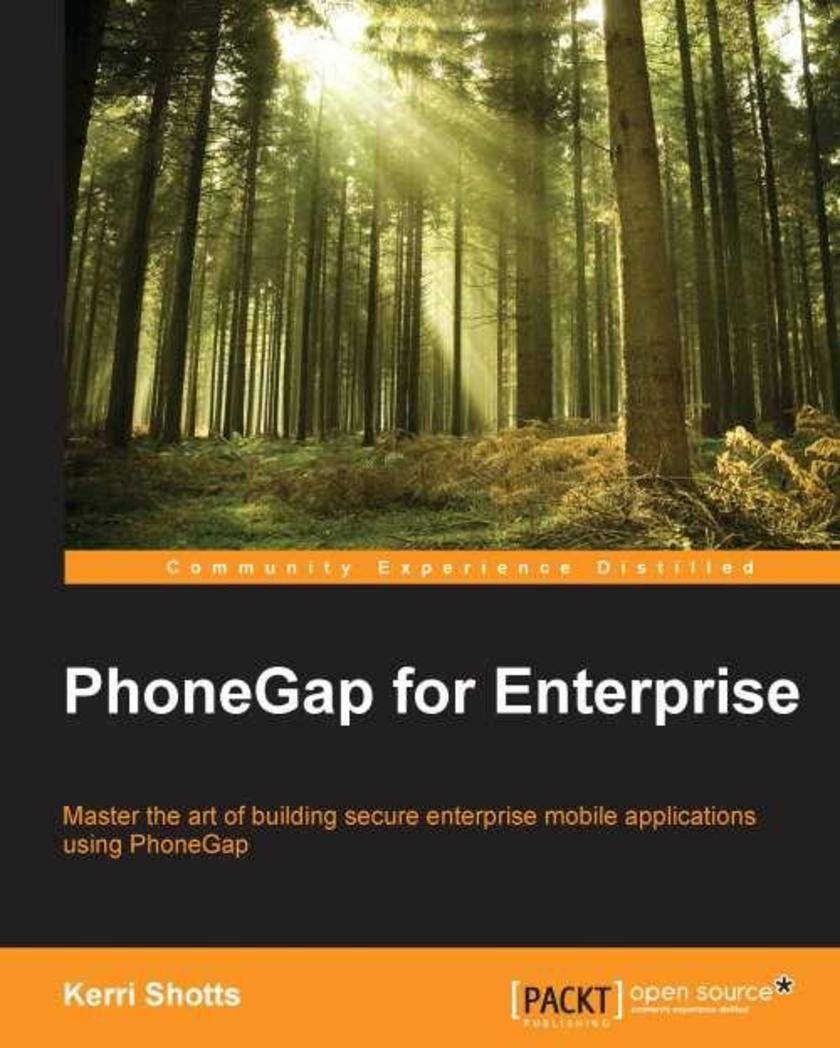
PhoneGap for Enterprise
¥54.49
This book is intended for developers who wish to use PhoneGap to develop useful, rich, secure mobile applications for their enterprise environment. The book assumes you have working knowledge of PhoneGap, HTML5, CSS3, and JavaScript, and a reasonable understanding of networking and n-tier architectures.
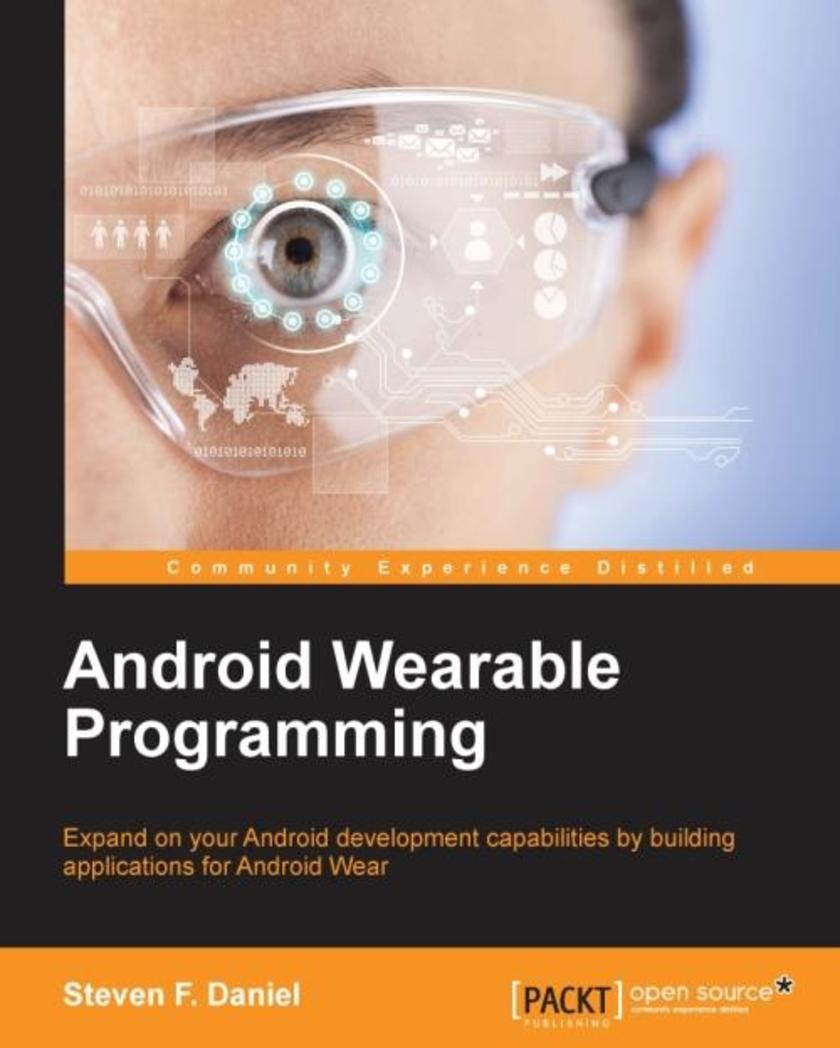
Android Wearable Programming
¥54.49
If you are an Android developer who wants to learn how to build applications for the Android Wear platform, then this is the book for you. This book only requires a basic knowledge of Android programming. Familiarity with development IDEs such as Android Studio, IntelliJ IDEA, or Eclipse will be helpful.
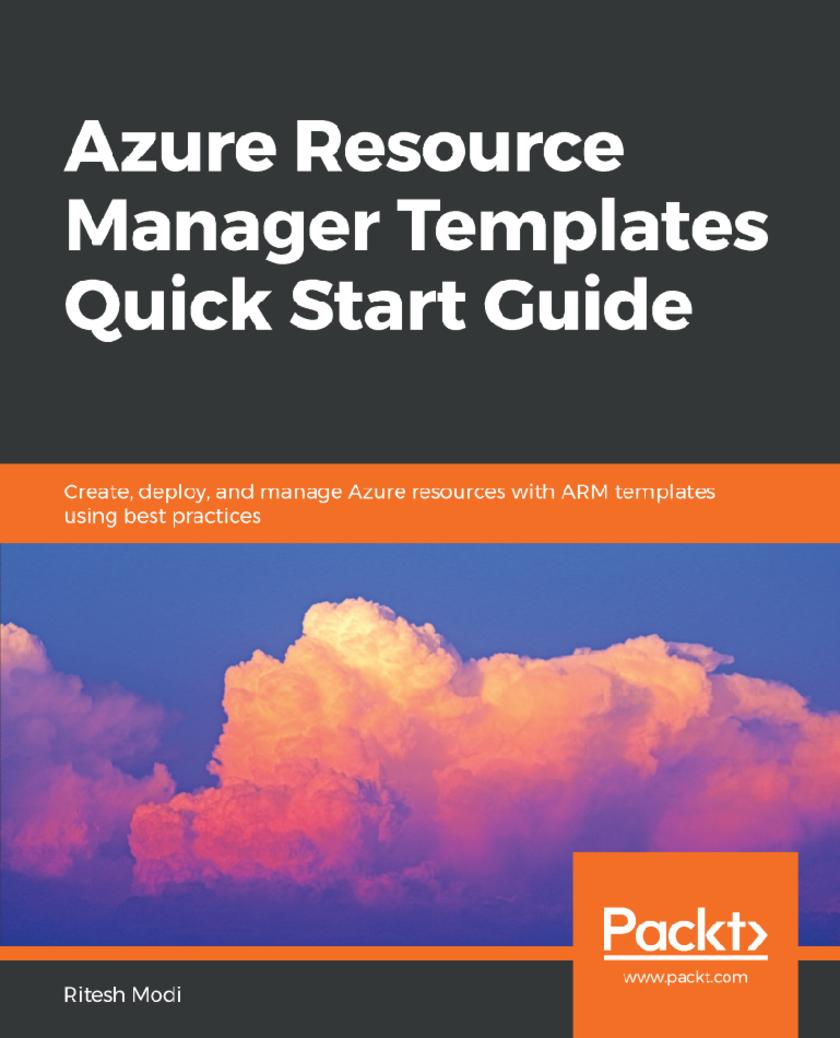
Azure Resource Manager Templates Quick Start Guide
¥54.49
Compose and decompose ARM templates and use advanced concepts like looping, conditions, dependencies, PowerShell and Desired State Configuration. Key Features * Design, implement, and unit test ARM templates * Develop and deploy ARM templates following security best practices Book Description Azure Resource Manager (ARM) templates are declarations of Azure resources in the JSON format to provision and maintain them using infrastructure as code. This book gives practical solutions and examples for provisioning and managing various Azure services using ARM templates. The book starts with an understanding of infrastructure as code, a refresher on JSON, and then moves on to explain the fundamental concepts of ARM templates. Important concepts like iteration, conditional evaluation, security, usage of expressions, and functions will be covered in detail. You will use linked and nested templates to create modular ARM templates. You will see how to create multiple instances of the same resources, how to nest and link templates, and how to establish dependencies between them. You will also learn about implementing design patterns, secure template design, the unit testing of ARM templates, and adopting best practices. By the end of this book, you will understand the entire life cycle of ARM templates and their testing, and be able to author them for complex deployments. What you will learn * Understand the foundations of ARM templates including nested and linked templates * Design, create, and unit test ARM templates using best practices * Learn about conditional deployments, looping, Custom Script Extensions using PowerShell, Bash, and DSC * Implement design patterns related to ARM templates * Run post-deployment PowerShell and Desired State Configuration scripts * Create solutions and deploy them on Azure using ARM templates Who this book is for This books is for developers, DevOps engineers, and architects who have experience in Azure.
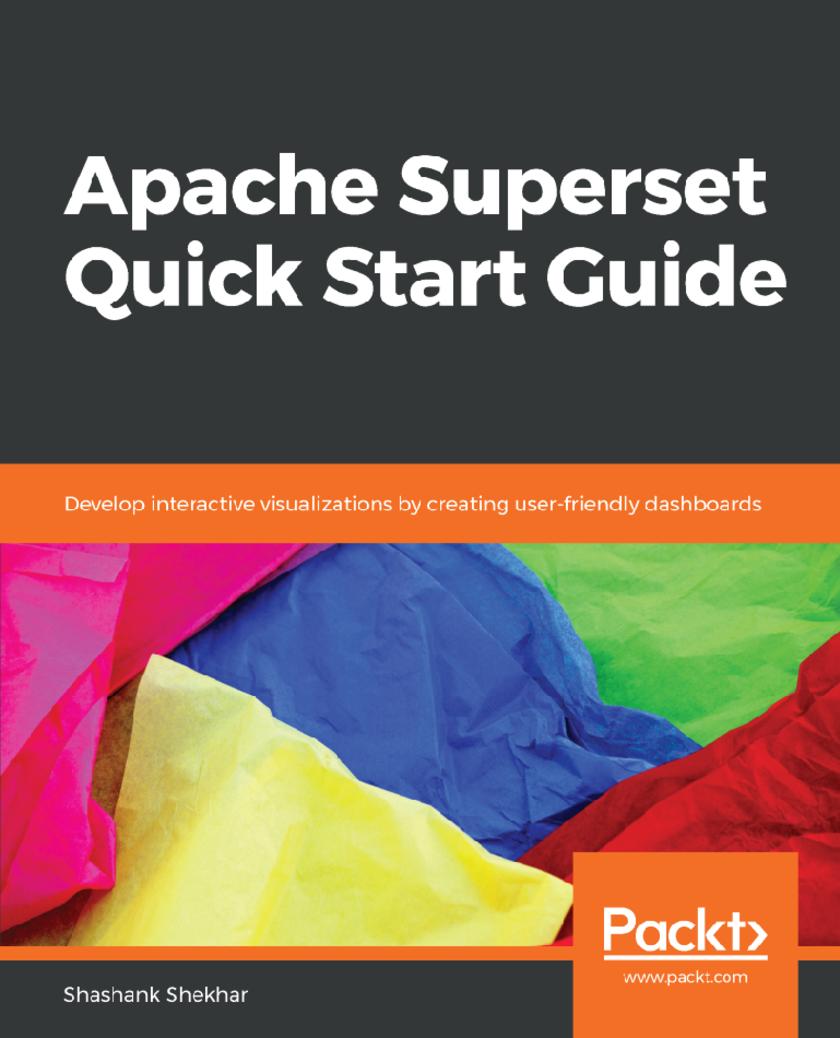
Apache Superset Quick Start Guide
¥54.49
Integrate open source data analytics and build business intelligence on SQL databases with Apache Superset. The quick, intuitive nature for data visualization in a web application makes it easy for creating interactive dashboards. Key Features *Work with Apache Superset's rich set of data visualizations *Create interactive dashboards and data storytelling *Easily explore data Book Description Apache Superset is a modern, open source, enterprise-ready business intelligence (BI) web application. With the help of this book, you will see how Superset integrates with popular databases like Postgres, Google BigQuery, Snowflake, and MySQL. You will learn to create real time data visualizations and dashboards on modern web browsers for your organization using Superset. First, we look at the fundamentals of Superset, and then get it up and running. You'll go through the requisite installation, configuration, and deployment. Then, we will discuss different columnar data types, analytics, and the visualizations available. You'll also see the security tools available to the administrator to keep your data safe. You will learn how to visualize relationships as graphs instead of coordinates on plain orthogonal axes. This will help you when you upload your own entity relationship dataset and analyze the dataset in new, different ways. You will also see how to analyze geographical regions by working with location data. Finally, we cover a set of tutorials on dashboard designs frequently used by analysts, business intelligence professionals, and developers. What you will learn *Get to grips with the fundamentals of data exploration using Superset *Set up a working instance of Superset on cloud services like Google Compute Engine *Integrate Superset with SQL databases *Build dashboards with Superset *Calculate statistics in Superset for numerical, categorical, or text data *Understand visualization techniques, filtering, and grouping by aggregation *Manage user roles and permissions in Superset *Work with SQL Lab Who this book is for This book is for data analysts, BI professionals, and developers who want to learn Apache Superset. If you want to create interactive dashboards from SQL databases, this book is what you need. Working knowledge of Python will be an advantage but not necessary to understand this book.
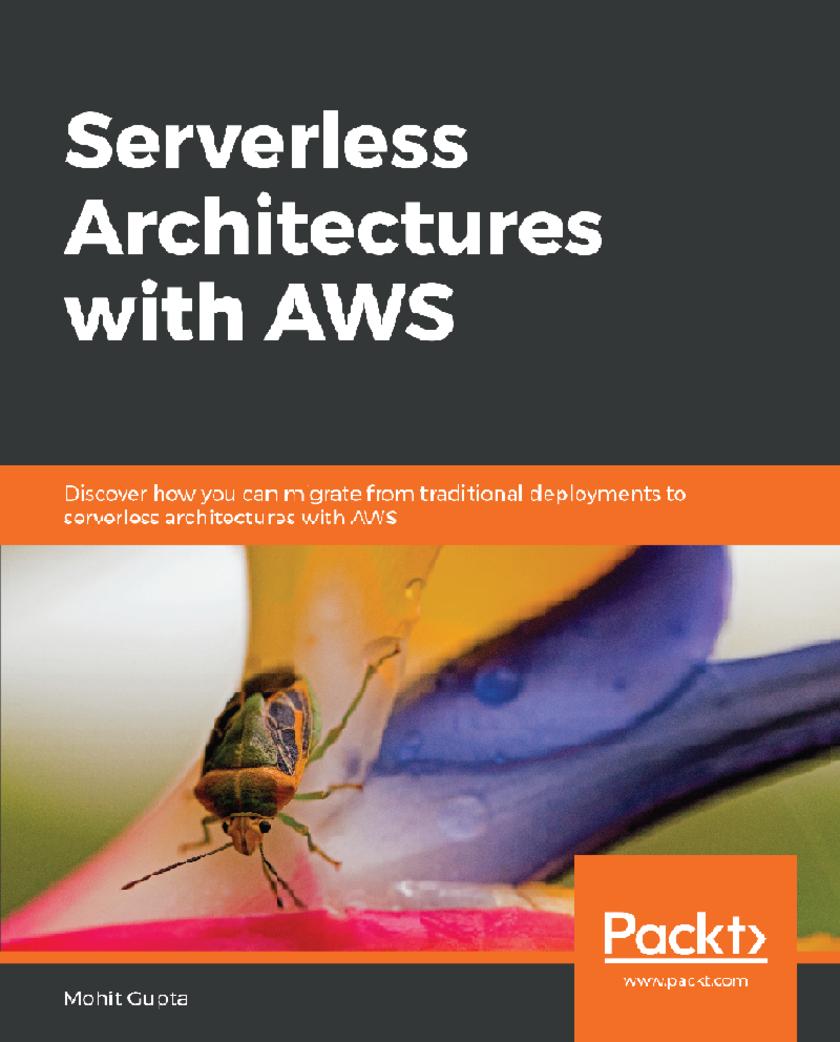
Serverless Architectures with AWS
¥54.49
Don't waste your energy thinking about servers; use AWS to build enterprise-grade serverless applications. Key Features *Learn how to quickly and easily go serverless *Explore AWS and Lambda: the first building blocks of serverless applications on AWS *Study different approaches to deploy and maintain serverless applications Book Description Serverless Architecture with AWS begins with an introduction to the serverless model and helps you get started with AWS and Lambda. You'll also get to grips with other capabilities of the AWS Serverless Platform and see how AWS supports enterprise-grade serverless applications with and without Lambda. This book will guide you in deploying your first serverless project and exploring the capabilities of serverless Amazon Athena, an interactive query service that makes it easy to analyze data in Amazon Simple Storage Service (S3 Amazon) using standard SQL. You’ll also learn about AWS Glue, a fully managed ETL service that makes categorizing data easy and cost-effective. You'll study how Amazon Kinesis makes it possible to unleash the potential of real-time data insights and analytics with capabilities such as video streams, data streams, data firehose, and data analytics. Last but not least, you’ll be equipped to combine Amazon Kinesis capabilities with AWS Lambda to create lightweight serverless architectures. By the end of the book, you will be ready to create and run your first serverless application that takes advantage of the high availability, security, performance, and scalability of AWS. What you will learn *Explore AWS services for supporting a serverless environment *Set up AWS services to make applications scalable and highly available *Deploy a static website with a serverless architecture *Build your first serverless web application *Study the changes in a deployed serverless web application *Apply best practices to ensure overall security, availability, and reliability Who this book is for This book is for you if you want to develop serverless applications and have some prior coding experience. Though no prior experience of AWS is needed, basic knowledge of Java or Node.js will be an added advantage.
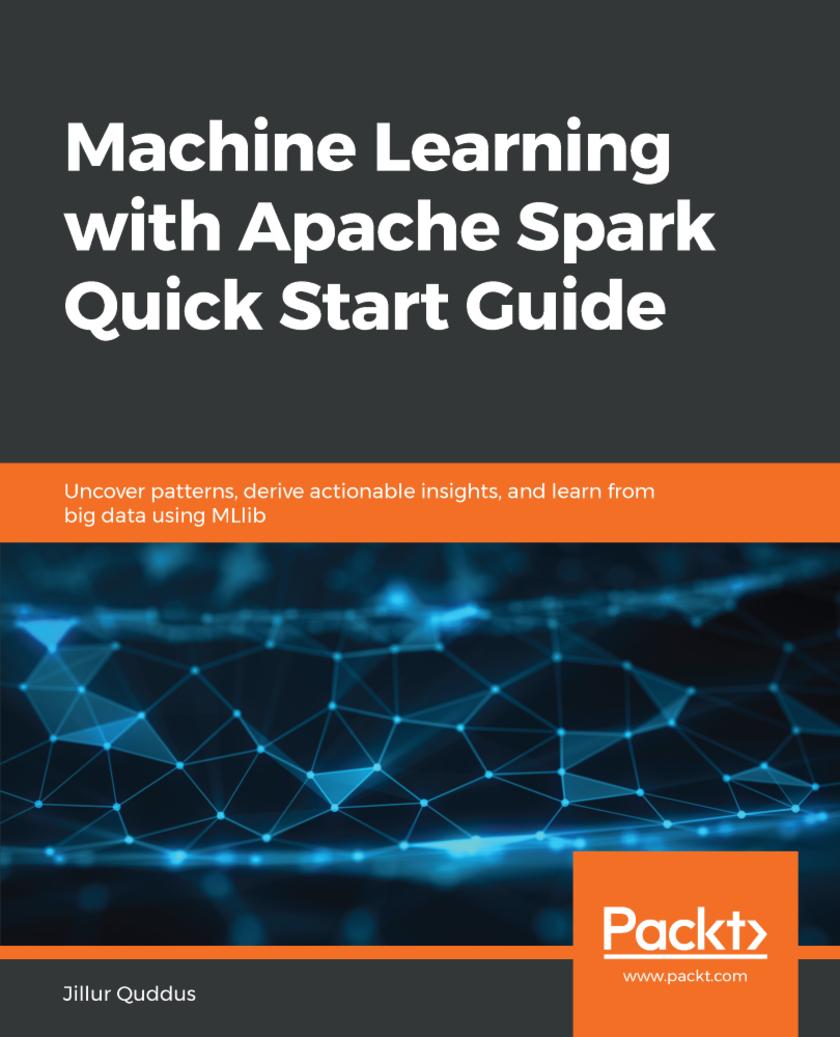
Machine Learning with Apache Spark Quick Start Guide
¥54.49
Combine advanced analytics including Machine Learning, Deep Learning Neural Networks and Natural Language Processing with modern scalable technologies including Apache Spark to derive actionable insights from Big Data in real-time Key Features *Make a hands-on start in the fields of Big Data, Distributed Technologies and Machine Learning *Learn how to design, develop and interpret the results of common Machine Learning algorithms *Uncover hidden patterns in your data in order to derive real actionable insights and business value Book Description Every person and every organization in the world manages data, whether they realize it or not. Data is used to describe the world around us and can be used for almost any purpose, from analyzing consumer habits to fighting disease and serious organized crime. Ultimately, we manage data in order to derive value from it, and many organizations around the world have traditionally invested in technology to help process their data faster and more efficiently. But we now live in an interconnected world driven by mass data creation and consumption where data is no longer rows and columns restricted to a spreadsheet, but an organic and evolving asset in its own right. With this realization comes major challenges for organizations: how do we manage the sheer size of data being created every second (think not only spreadsheets and databases, but also social media posts, images, videos, music, blogs and so on)? And once we can manage all of this data, how do we derive real value from it? The focus of Machine Learning with Apache Spark is to help us answer these questions in a hands-on manner. We introduce the latest scalable technologies to help us manage and process big data. We then introduce advanced analytical algorithms applied to real-world use cases in order to uncover patterns, derive actionable insights, and learn from this big data. What you will learn *Understand how Spark fits in the context of the big data ecosystem *Understand how to deploy and configure a local development environment using Apache Spark *Understand how to design supervised and unsupervised learning models *Build models to perform NLP, deep learning, and cognitive services using Spark ML libraries *Design real-time machine learning pipelines in Apache Spark *Become familiar with advanced techniques for processing a large volume of data by applying machine learning algorithms Who this book is for This book is aimed at Business Analysts, Data Analysts and Data Scientists who wish to make a hands-on start in order to take advantage of modern Big Data technologies combined with Advanced Analytics.
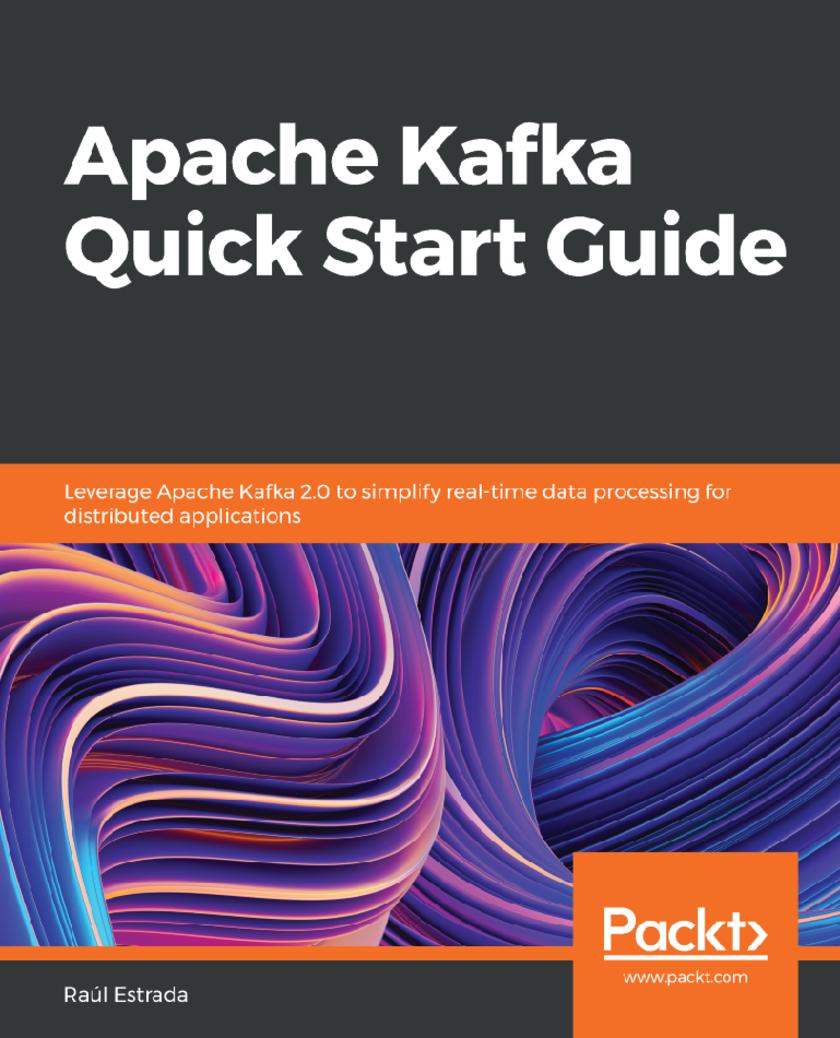
Apache Kafka Quick Start Guide
¥54.49
Process large volumes of data in real-time while building high performance and robust data stream processing pipeline using the latest Apache Kafka 2.0 Key Features *Solve practical large data and processing challenges with Kafka *Tackle data processing challenges like late events, windowing, and watermarking *Understand real-time streaming applications processing using Schema registry, Kafka connect, Kafka streams, and KSQL Book Description Apache Kafka is a great open source platform for handling your real-time data pipeline to ensure high-speed filtering and pattern matching on the ?y. In this book, you will learn how to use Apache Kafka for efficient processing of distributed applications and will get familiar with solving everyday problems in fast data and processing pipelines. This book focuses on programming rather than the configuration management of Kafka clusters or DevOps. It starts off with the installation and setting up the development environment, before quickly moving on to performing fundamental messaging operations such as validation and enrichment. Here you will learn about message composition with pure Kafka API and Kafka Streams. You will look into the transformation of messages in different formats, such asext, binary, XML, JSON, and AVRO. Next, you will learn how to expose the schemas contained in Kafka with the Schema Registry. You will then learn how to work with all relevant connectors with Kafka Connect. While working with Kafka Streams, you will perform various interesting operations on streams, such as windowing, joins, and aggregations. Finally, through KSQL, you will learn how to retrieve, insert, modify, and delete data streams, and how to manipulate watermarks and windows. What you will learn *How to validate data with Kafka *Add information to existing data ?ows *Generate new information through message composition *Perform data validation and versioning with the Schema Registry *How to perform message Serialization and Deserialization *How to perform message Serialization and Deserialization *Process data streams with Kafka Streams *Understand the duality between tables and streams with KSQL Who this book is for This book is for developers who want to quickly master the practical concepts behind Apache Kafka. The audience need not have come across Apache Kafka previously; however, a familiarity of Java or any JVM language will be helpful in understanding the code in this book.
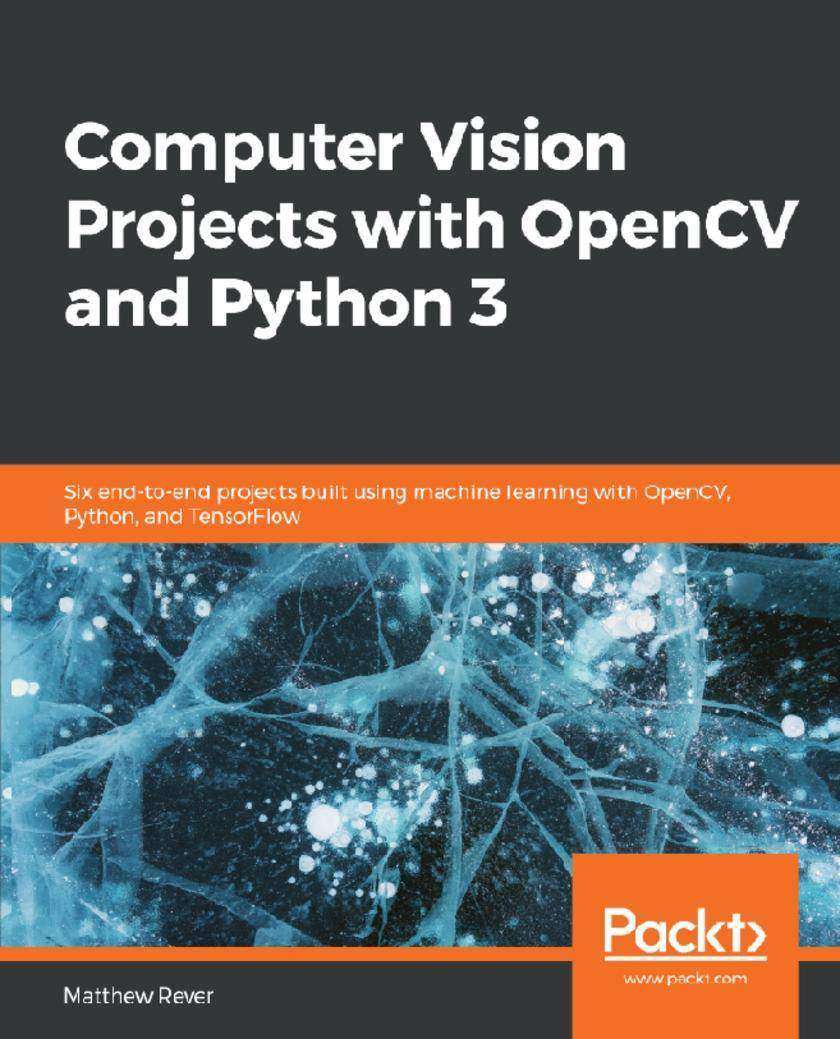
Computer Vision Projects with OpenCV and Python 3
¥54.49
Gain a working knowledge of advanced machine learning and explore Python’s powerful tools for extracting data from images and videos Key Features *Implement image classification and object detection using machine learning and deep learning *Perform image classification, object detection, image segmentation, and other Computer Vision tasks *Crisp content with a practical approach to solving real-world problems in Computer Vision Book Description Python is the ideal programming language for rapidly prototyping and developing production-grade codes for image processing and Computer Vision with its robust syntax and wealth of powerful libraries. This book will help you design and develop production-grade Computer Vision projects tackling real-world problems. With the help of this book, you will learn how to set up Anaconda and Python for the major OSes with cutting-edge third-party libraries for Computer Vision. You'll learn state-of-the-art techniques for classifying images, finding and identifying human postures, and detecting faces within videos. You will use powerful machine learning tools such as OpenCV, Dlib, and TensorFlow to build exciting projects such as classifying handwritten digits, detecting facial features,and much more. The book also covers some advanced projects, such as reading text from license plates from real-world images using Google’s Tesseract software, and tracking human body poses using DeeperCut within TensorFlow. By the end of this book, you will have the expertise required to build your own Computer Vision projects using Python and its associated libraries. What you will learn *Install and run major Computer Vision packages within Python *Apply powerful support vector machines for simple digit classification *Understand deep learning with TensorFlow *Build a deep learning classifier for general images *Use LSTMs for automated image captioning *Read text from real-world images *Extract human pose data from images Who this book is for Python programmers and machine learning developers who wish to build exciting Computer Vision projects using the power of machine learning and OpenCV will find this book useful. The only prerequisite for this book is that you should have a sound knowledge of Python programming.

Hands-On Dashboard Development with QlikView
¥54.49
A step-by-step approach to building stunning dashboards with QlikView Key Features * Perform effective storytelling through interactive dashboards built with QlikView * Create different types of visualizations from a variety of data sources * Includes tips, tricks, and best practices to perform effective Business Intelligence using QlikView Book Description QlikView is one of the market leaders when it comes to building effective Business Intelligence solutions. This book will show how you can leverage its power to build your own dashboards to tell your own data story. The book starts with showing you how to connect your data to QlikView and create your own QlikView application. You will learn how to add data from multiple sources, create a data model by joining data, and then review it on the front end. You will work with QlikView components such as charts, list boxes, input boxes, and text objects to create stunning visualizations that help give actionable business insights. You will also learn how to perform analysis on your data in QlikView and master the various types of security measures to be taken in QlikView. By the end of this book, you will have all the essential knowledge required for insightful data storytelling and creating useful BI dashboards using QlikView. What you will learn * Learn to use the latest and newest features of QlikView * Connect QlikView to various data sources, such as databases and websites * Create a fully featured data model without circular references * Display your data in maps, charts, and text across multiple sheets * Apply set analysis to your data in QlikView expressions * Secure your data based on the various audience types Who this book is for This book is best suited for BI professionals, data analysts and budding QlikView developers who wish to build effective dashboards using QlikView. Some basic understanding of the data visualization concepts and Business Intelligence is required.
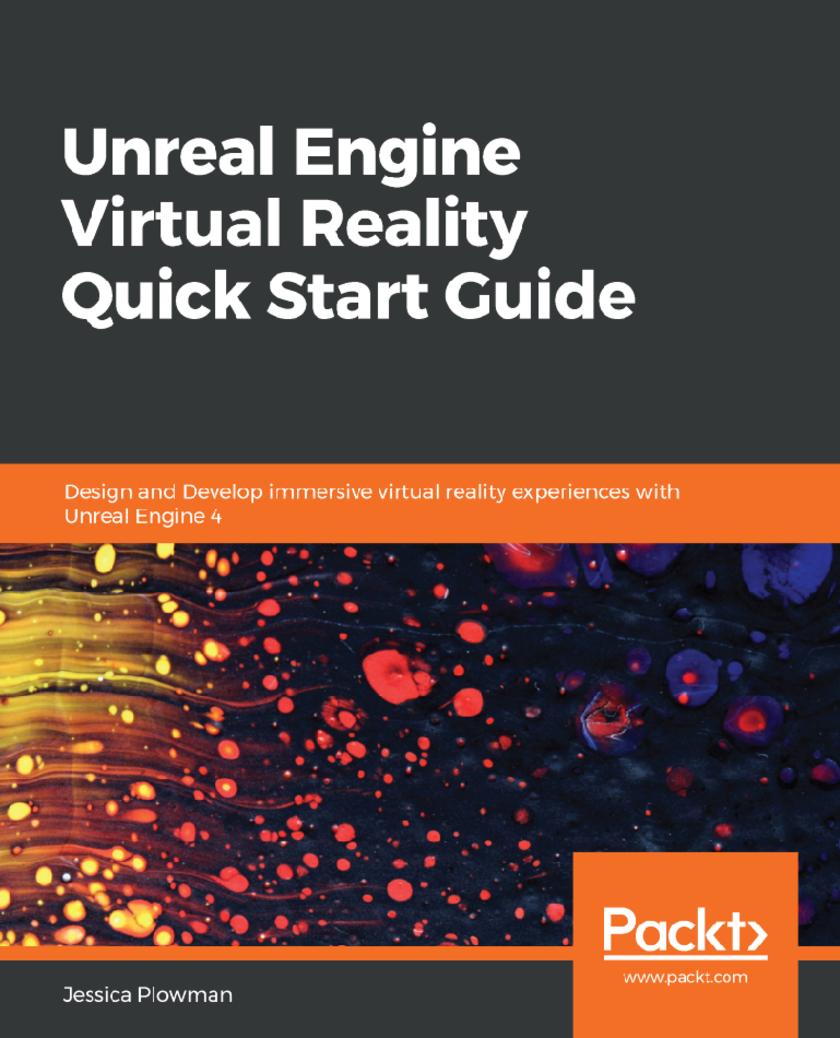
Unreal Engine Virtual Reality Quick Start Guide
¥54.49
Unreal Engine 4 for virtual reality game design, development, User Experience design techniques and Blueprint programming to create virtual reality gameplay for HTC Vive, Oculus Rift, PSVR, and Windows Mixed Reality headsets. Key Features * Build VR games from scratch with the power of Unreal Engine 4 * Learn User Experience design practices to take your VR game to the next level * Understand the best practices to creating art for games on HTC Vive, Oculus Rift, and PSVR Book Description With the ability to put players directly in the game, virtual reality gives users the chance to experience digital worlds directly. Nevertheless, many designers are unsure where to start when working with this amazing technology. With this book, you will learn user experience design processes and create immersive gameplay experiences designed for entertainment and player comfort. Using the power of Unreal Engine 4’s Blueprint visual scripting language, you will build player interaction and locomotion systems from scratch and use these flexible systems to create a sample game, as well as develop functional 2D and 3D user interfaces for players to interact with. And also learn the best practices for creating game art for virtual reality. Finally, you will learn how to test your application with your target audience and finalize your game for distribution. By the end of this book, you will have the knowledge to be able to make the leap from traditional game development to creating immersive virtual reality experiences using Unreal Engine 4. What you will learn * Understand how to get started with VR development in Unreal Engine 4 * Design and create interaction and locomotion systems from scratch * Plan and program a sample game for VR * Understand how VR affects user experience and user interfaces * Discuss what is needed to create optimized art for VR * Test your game with users and prepare for distribution Who this book is for The audience for this book is intermediate or advanced users of Unreal Engine 4 but who have not begun working with VR technology. These users are familiar with the game engine and have an interest in VR technology. They are just beginning to explore the VR features that the game engine has to offer.
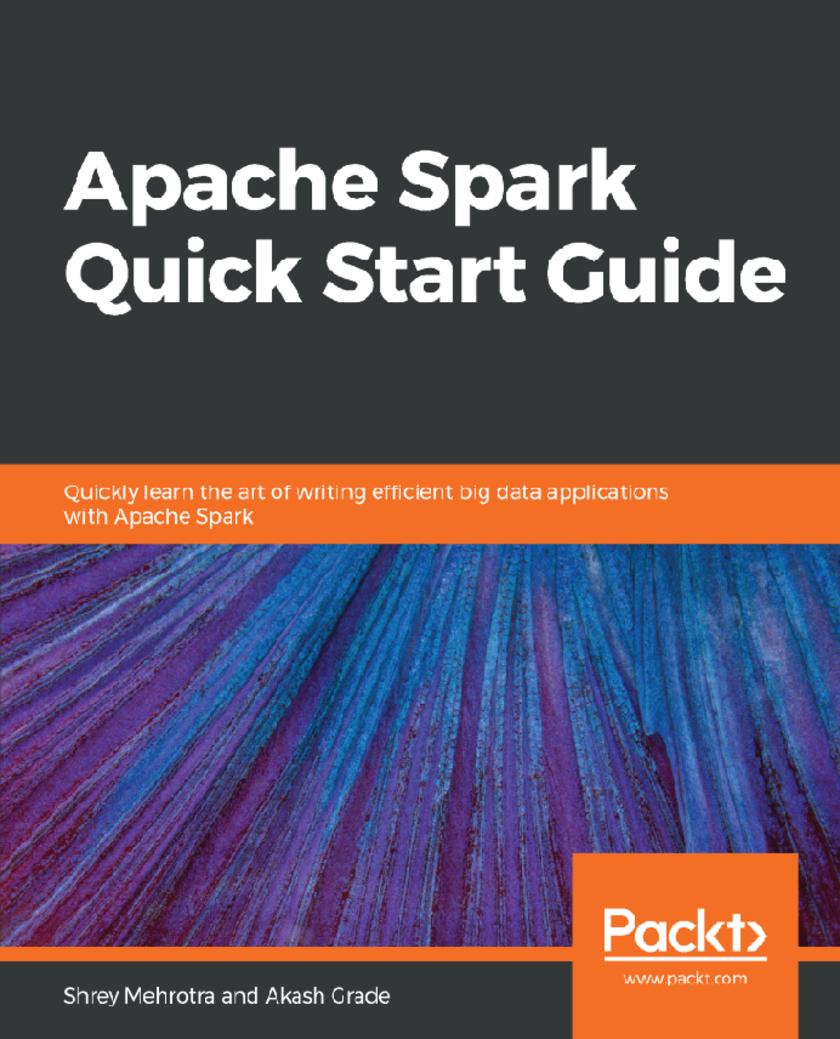
Apache Spark Quick Start Guide
¥54.49
A practical guide for solving complex data processing challenges by applying the best optimizations techniques in Apache Spark. Key Features * Learn about the core concepts and the latest developments in Apache Spark * Master writing efficient big data applications with Spark’s built-in modules for SQL, Streaming, Machine Learning and Graph analysis * Get introduced to a variety of optimizations based on the actual experience Book Description Apache Spark is a flexible framework that allows processing of batch and real-time data. Its unified engine has made it quite popular for big data use cases. This book will help you to get started with Apache Spark 2.0 and write big data applications for a variety of use cases. It will also introduce you to Apache Spark – one of the most popular Big Data processing frameworks. Although this book is intended to help you get started with Apache Spark, but it also focuses on explaining the core concepts. This practical guide provides a quick start to the Spark 2.0 architecture and its components. It teaches you how to set up Spark on your local machine. As we move ahead, you will be introduced to resilient distributed datasets (RDDs) and DataFrame APIs, and their corresponding transformations and actions. Then, we move on to the life cycle of a Spark application and learn about the techniques used to debug slow-running applications. You will also go through Spark’s built-in modules for SQL, streaming, machine learning, and graph analysis. Finally, the book will lay out the best practices and optimization techniques that are key for writing efficient Spark applications. By the end of this book, you will have a sound fundamental understanding of the Apache Spark framework and you will be able to write and optimize Spark applications. What you will learn * Learn core concepts such as RDDs, DataFrames, transformations, and more * Set up a Spark development environment * Choose the right APIs for your applications * Understand Spark’s architecture and the execution flow of a Spark application * Explore built-in modules for SQL, streaming, ML, and graph analysis * Optimize your Spark job for better performance Who this book is for If you are a big data enthusiast and love processing huge amount of data, this book is for you. If you are data engineer and looking for the best optimization techniques for your Spark applications, then you will find this book helpful. This book also helps data scientists who want to implement their machine learning algorithms in Spark. You need to have a basic understanding of any one of the programming languages such as Scala, Python or Java.
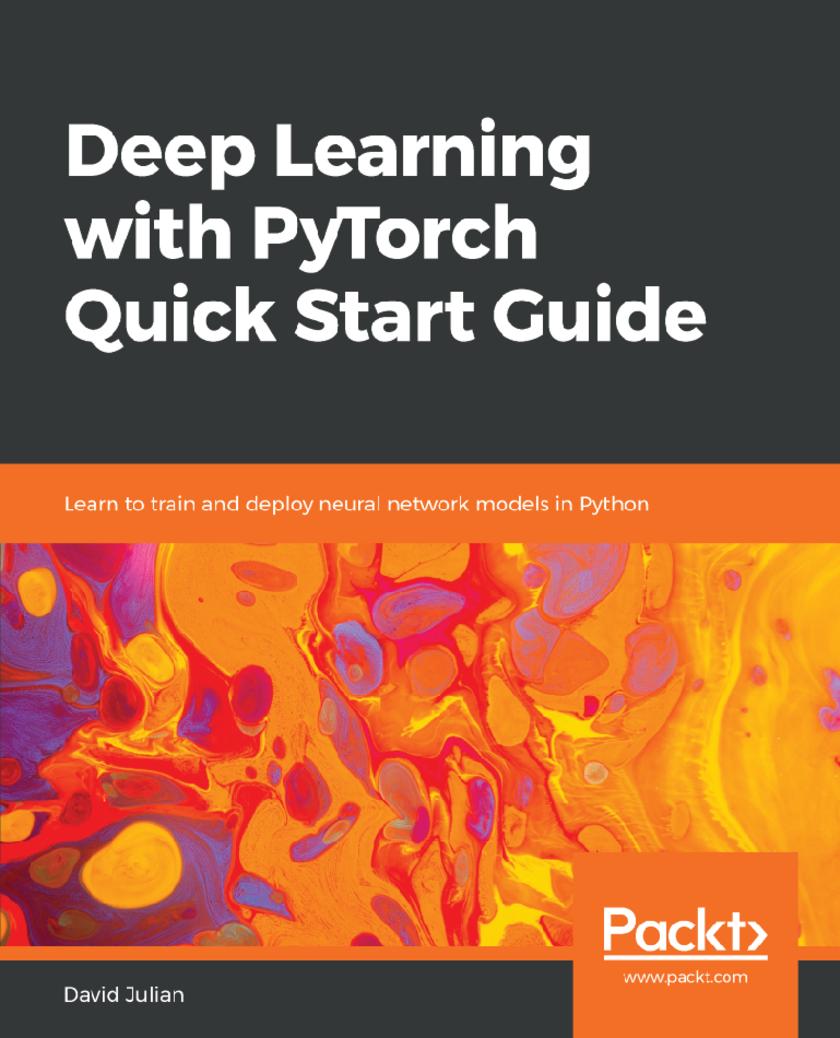
Deep Learning with PyTorch Quick Start Guide
¥54.49
Introduction to deep learning and PyTorch by building a convolutional neural network and recurrent neural network for real-world use cases such as image classification, transfer learning, and natural language processing. Key Features *Clear and concise explanations *Gives important insights into deep learning models *Practical demonstration of key concepts Book Description PyTorch is extremely powerful and yet easy to learn. It provides advanced features, such as supporting multiprocessor, distributed, and parallel computation. This book is an excellent entry point for those wanting to explore deep learning with PyTorch to harness its power. This book will introduce you to the PyTorch deep learning library and teach you how to train deep learning models without any hassle. We will set up the deep learning environment using PyTorch, and then train and deploy different types of deep learning models, such as CNN, RNN, and autoencoders. You will learn how to optimize models by tuning hyperparameters and how to use PyTorch in multiprocessor and distributed environments. We will discuss long short-term memory network (LSTMs) and build a language model to predict text. By the end of this book, you will be familiar with PyTorch's capabilities and be able to utilize the library to train your neural networks with relative ease. What you will learn *Set up the deep learning environment using the PyTorch library *Learn to build a deep learning model for image classification *Use a convolutional neural network for transfer learning *Understand to use PyTorch for natural language processing *Use a recurrent neural network to classify text *Understand how to optimize PyTorch in multiprocessor and distributed environments *Train, optimize, and deploy your neural networks for maximum accuracy and performance *Learn to deploy production-ready models Who this book is for Developers and Data Scientist familiar with Machine Learning but new to deep learning, or existing practitioners of deep learning who would like to use PyTorch to train their deep learning models will find this book to be useful. Having knowledge of Python programming will be an added advantage, while previous exposure to PyTorch is not needed.
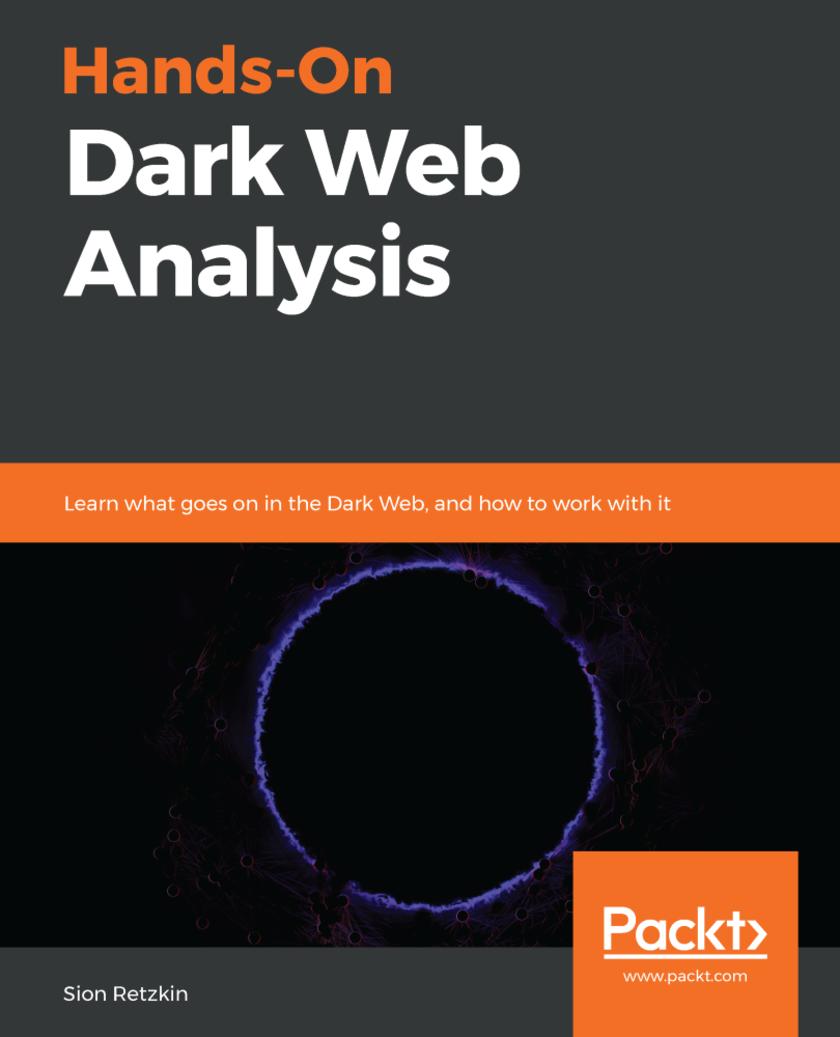
Hands-On Dark Web Analysis
¥54.49
Understanding the concept Dark Web and Dark Net to utilize it for effective cybersecurity Key Features *Understand the concept of Dark Net and Deep Web *Use Tor to extract data and maintain anonymity *Develop a security framework using Deep web evidences Book Description The overall world wide web is divided into three main areas - the Surface Web, the Deep Web, and the Dark Web. The Deep Web and Dark Web are the two areas which are not accessible through standard search engines or browsers. It becomes extremely important for security professionals to have control over these areas to analyze the security of your organization. This book will initially introduce you to the concept of the Deep Web and the Dark Web and their significance in the security sector. Then we will deep dive into installing operating systems and Tor Browser for privacy, security and anonymity while accessing them. During the course of the book, we will also share some best practices which will be useful in using the tools for best effect. By the end of this book, you will have hands-on experience working with the Deep Web and the Dark Web for security analysis What you will learn *Access the Deep Web and the Dark Web *Learn to search and find information in the Dark Web *Protect yourself while browsing the Dark Web *Understand what the Deep Web and Dark Web are *Learn what information you can gather, and how Who this book is for This book is targeted towards security professionals, security analyst, or any stakeholder interested in learning the concept of deep web and dark net. No prior knowledge on Deep Web and Dark Net is required
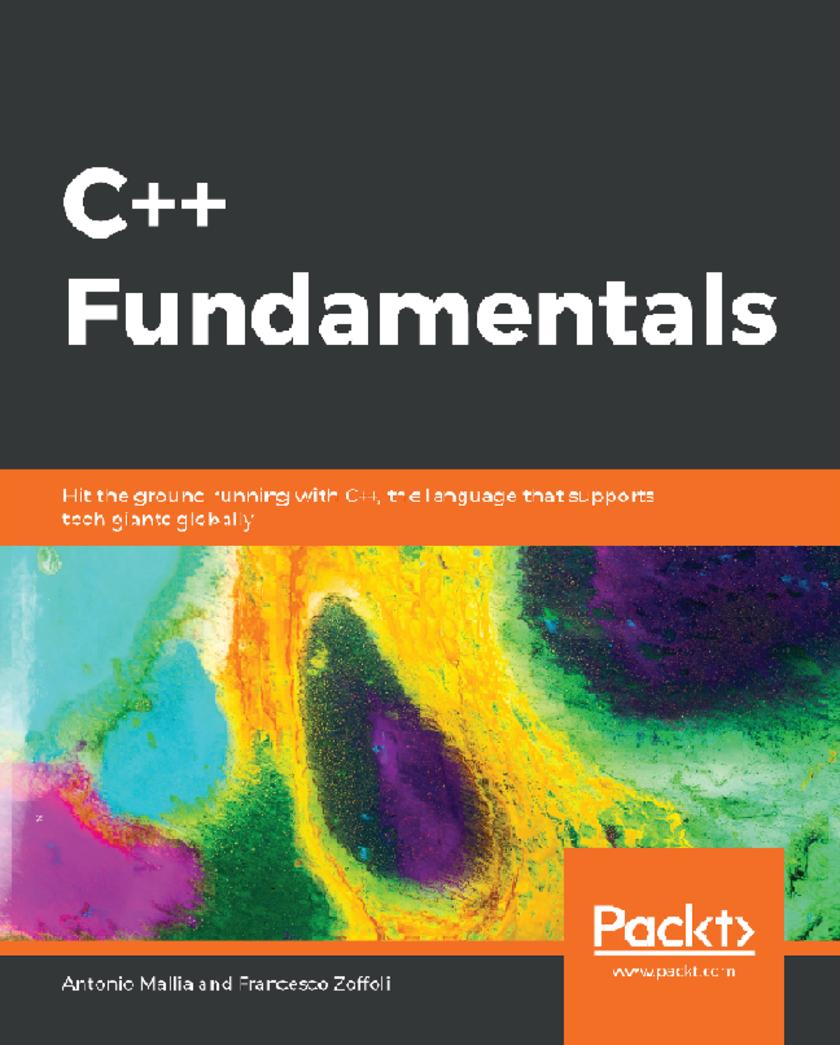
C++ Fundamentals
¥54.49
Write high-level abstractions while retaining full control of the hardware, performances, and maintainability. Key Features * Transform your ideas into modern C++ code, with both C++11 and C++17 * Explore best practices for creating high-performance solutions * Understand C++ basics and work with concrete real-world examples Book Description C++ Fundamentals begins by introducing you to the C++ syntax. You will study the semantics of variables along with their advantages and trade-offs, and see how they can be best used to write safe and efficient code. With the help of this book, you’ll be able to compile fully working C++ programs and understand how variables, references, and pointers can be used to manipulate the state of the program. Then you'll explore functions and classes — the features that C++ offers to organize a program — and use them to solve more complex problems such as functions and classes. You’ll also understand common pitfalls and modern best practices, especially the ones that diverge from the C++98 guideline. As you advance through the chapters, you’ll study the advantages of generic programming and write your own templates to make generic algorithms that work with any type. This C++ book will guide you in fully exploiting standard containers and understanding how to pick the appropriate container for each problem. You will even work with a variety of memory management tools in C++. By the end of this book, you will not only be able to write efficient code, but also be equipped to improve the readability, performance, and maintainability of your programs using standard algorithms. What you will learn * Work with the C++ compilation model and syntaxes * Apply best practices for writing functions and classes * Write safe, generic, and efficient code with templates * Explore the containers that C++ standard offers * Discover the new paradigms introduced with C++11, C++14, and C++17 * Get to grips with the core language features of C++ * Abstract complex problems using object-oriented programming in C++ Who this book is for If you’re a developer looking to learn a new powerful language or are familiar with C++ but want to update your knowledge with modern paradigms of C++11, C++14, and C++17, this book is for you. To easily understand the concepts in the book, you must be familiar with the basics of programming.
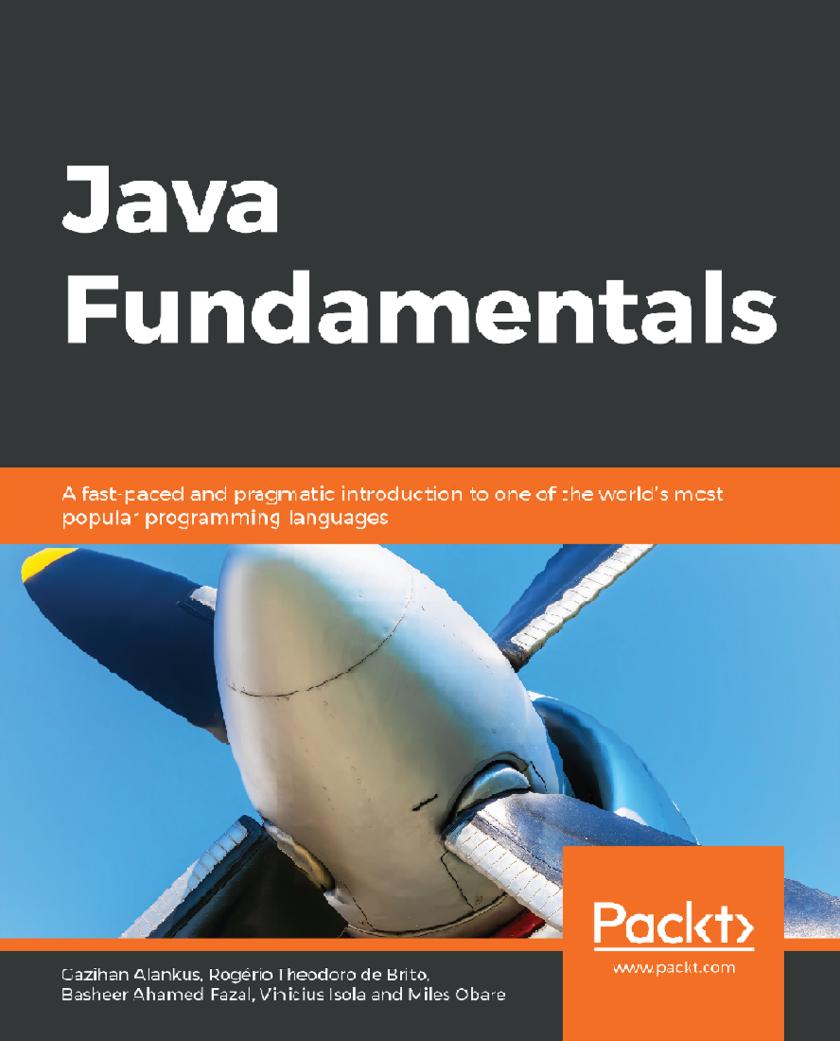
Java Fundamentals
¥54.49
Enhance your career options with this well-crafted object-oriented programming language that enjoys the support of an enormous ecosystem of tools and libraries Key Features * Get introduced to Java, its features, and its ecosystem * Understand how Java uses object-oriented programming * Become an expert Java exception handler Book Description Since its inception, Java has stormed the programming world. Its features and functionalities provide developers with the tools needed to write robust cross-platform applications. Java Fundamentals introduces you to these tools and functionalities that will enable you to create Java programs. The book begins with an introduction to the language, its philosophy, and evolution over time, until the latest release. You'll learn how the javac/java tools work and what Java packages are - the way a Java program is usually organized. Once you are comfortable with this, you'll be introduced to advanced concepts of the language, such as control flow keywords. You'll explore object-oriented programming and the part it plays in making Java what it is. In the concluding chapters, you'll get to grips with classes, typecasting, and interfaces, and understand the use of data structures, arrays, strings, handling exceptions, and creating generics. By the end of this book, you will have learned to write programs, automate tasks, and follow advanced courses on algorithms and data structures or explore more advanced Java courses. What you will learn * Create and run Java programs * Use data types, data structures, and control flow in your code * Implement best practices while creating objects * Work with constructors and inheritance * Understand advanced data structures to organize and store data * Employ generics for stronger check-types during compilation * Learn to handle exceptions in your code Who this book is for Java Fundamentals is designed for tech enthusiasts who are familiar with some programming languages and want a quick introduction to the most important principles of Java.
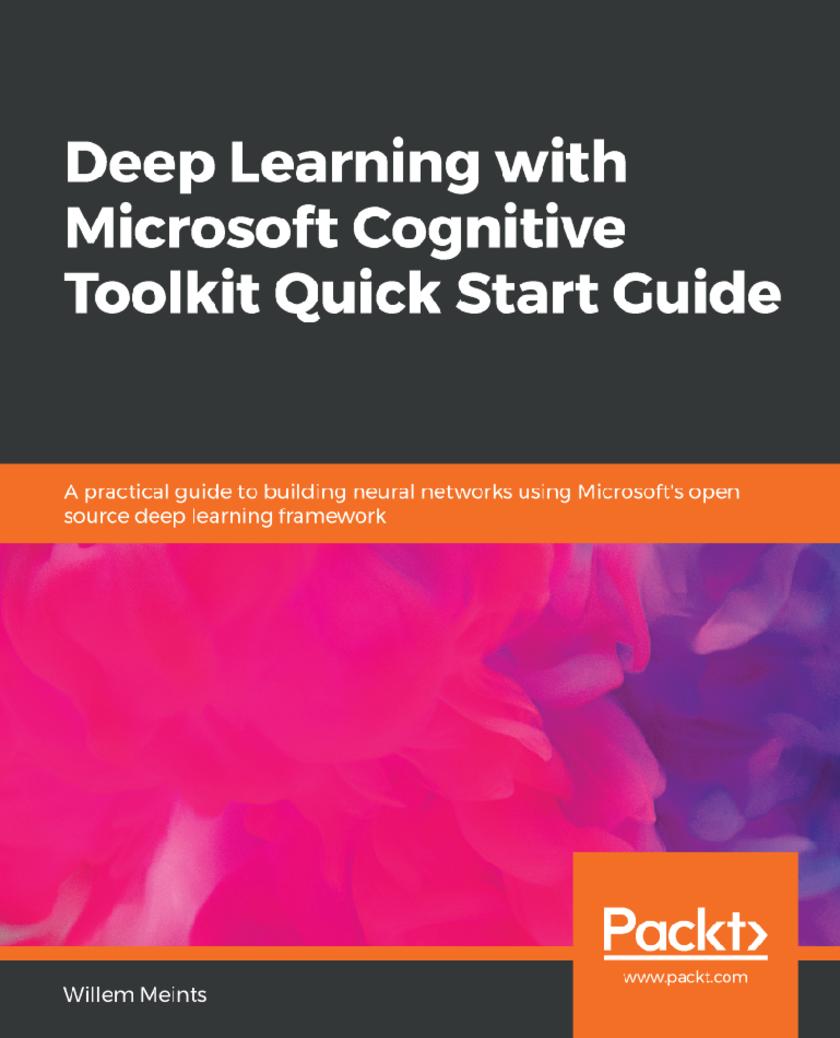
Deep Learning with Microsoft Cognitive Toolkit Quick Start Guide
¥54.49
Learn how to train popular deep learning architectures such as autoencoders, convolutional and recurrent neural networks while discovering how you can use deep learning models in your software applications with Microsoft Cognitive Toolkit Key Features * Understand the fundamentals of Microsoft Cognitive Toolkit and set up the development environment * Train different types of neural networks using Cognitive Toolkit and deploy it to production * Evaluate the performance of your models and improve your deep learning skills Book Description Cognitive Toolkit is a very popular and recently open sourced deep learning toolkit by Microsoft. Cognitive Toolkit is used to train fast and effective deep learning models. This book will be a quick introduction to using Cognitive Toolkit and will teach you how to train and validate different types of neural networks, such as convolutional and recurrent neural networks. This book will help you understand the basics of deep learning. You will learn how to use Microsoft Cognitive Toolkit to build deep learning models and discover what makes this framework unique so that you know when to use it. This book will be a quick, no-nonsense introduction to the library and will teach you how to train different types of neural networks, such as convolutional neural networks, recurrent neural networks, autoencoders, and more, using Cognitive Toolkit. Then we will look at two scenarios in which deep learning can be used to enhance human capabilities. The book will also demonstrate how to evaluate your models' performance to ensure it trains and runs smoothly and gives you the most accurate results. Finally, you will get a short overview of how Cognitive Toolkit fits in to a DevOps environment What you will learn * Set up your deep learning environment for the Cognitive Toolkit on Windows and Linux * Pre-process and feed your data into neural networks * Use neural networks to make effcient predictions and recommendations * Train and deploy effcient neural networks such as CNN and RNN * Detect problems in your neural network using TensorBoard * Integrate Cognitive Toolkit with Azure ML Services for effective deep learning Who this book is for Data Scientists, Machine learning developers, AI developers who wish to train and deploy effective deep learning models using Microsoft CNTK will find this book to be useful. Readers need to have experience in Python or similar object-oriented language like C# or Java.
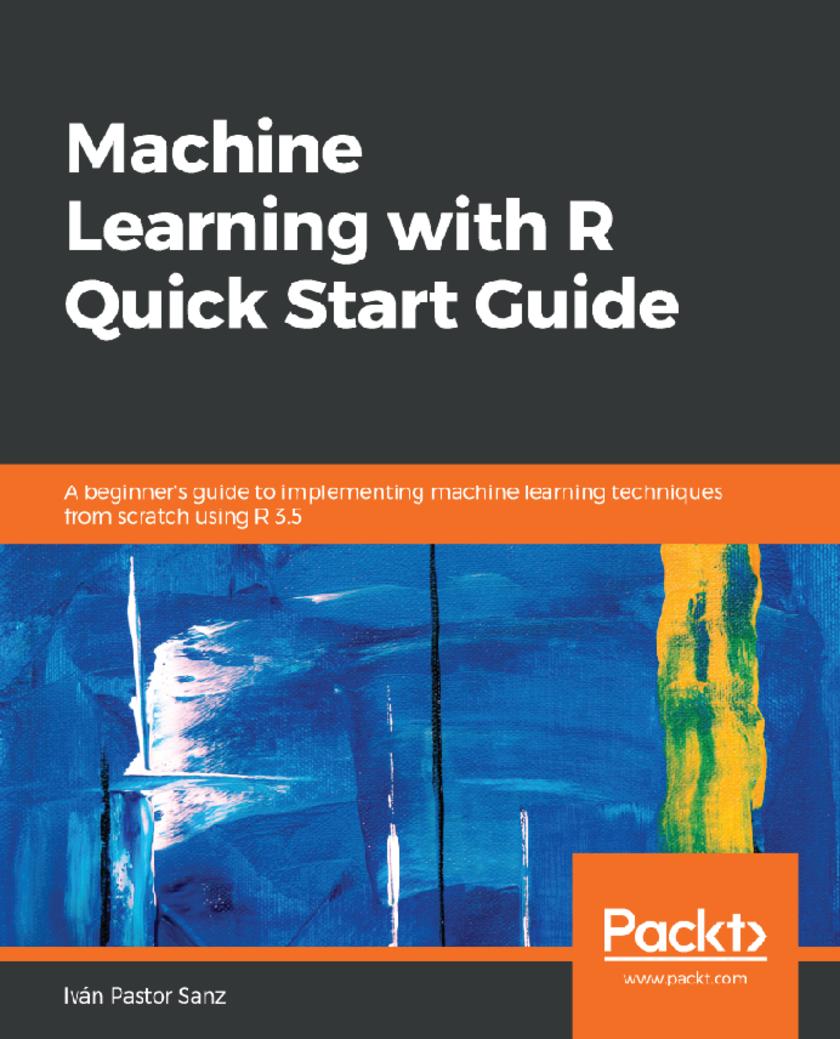
Machine Learning with R Quick Start Guide
¥54.49
Learn how to use R to apply powerful machine learning methods and gain insight into real-world applications using clustering, logistic regressions, random forests, support vector machine, and more. Key Features * Use R 3.5 to implement real-world examples in machine learning * Implement key machine learning algorithms to understand the working mechanism of smart models * Create end-to-end machine learning pipelines using modern libraries from the R ecosystem Book Description Machine Learning with R Quick Start Guide takes you on a data-driven journey that starts with the very basics of R and machine learning. It gradually builds upon core concepts so you can handle the varied complexities of data and understand each stage of the machine learning pipeline. From data collection to implementing Natural Language Processing (NLP), this book covers it all. You will implement key machine learning algorithms to understand how they are used to build smart models. You will cover tasks such as clustering, logistic regressions, random forests, support vector machines, and more. Furthermore, you will also look at more advanced aspects such as training neural networks and topic modeling. By the end of the book, you will be able to apply the concepts of machine learning, deal with data-related problems, and solve them using the powerful yet simple language that is R. What you will learn * Introduce yourself to the basics of machine learning with R 3.5 * Get to grips with R techniques for cleaning and preparing your data for analysis and visualize your results * Learn to build predictive models with the help of various machine learning techniques * Use R to visualize data spread across multiple dimensions and extract useful features * Use interactive data analysis with R to get insights into data * Implement supervised and unsupervised learning, and NLP using R libraries Who this book is for This book is for graduate students, aspiring data scientists, and data analysts who wish to enter the field of machine learning and are looking to implement machine learning techniques and methodologies from scratch using R 3.5. A working knowledge of the R programming language is expected.




 购物车
购物车 个人中心
个人中心



